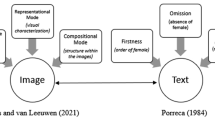Abstract
This paper sets out to investigate the extent of acceptance of gender-fair language proposals within the field of education; that is, the teaching of Spanish as a foreign language. The study was carried out at a Ghanaian public university amongst teachers and students of Spanish as a foreign language. Through a corpus and discourse analysis of audio recorded classroom lessons, examination papers, WhatsApp chats and electronic messages, the author examines the usage of gender-fair language among the members of the academic community. The author inquires if inclusive language is used by the participants, which types are used, why they are used and the patterns of usage. Additionally, a survey is conducted to compare native and non-native participants’ sensibilities to the use of the masculine generic. The author found that despite the resistance of the Spanish Royal Academy and other parties, gender-fair language proposals appear to have infiltrated some academic domains to some extent. Finally, the author recommends some strategies through which Spanish language teachers can avoid gender inequity in language education without departing from the norm.
Similar content being viewed by others
References
Ayala Castro, M. C., Salazar, G., & Guerra, M. (2002). Manual de lenguaje administrativo no sexista. Málaga: Asociación de Estudios Históricos sobre la Mujer.
Bengoechea, M. (2003). Guía para la revisión del lenguaje desde la perspectiva de género: Proyecto Parekatuz. Bilbao: Diputación Foral de Vizcaya.
Bengoechea, M. (2011). Non-sexist Spanish policies: An attempt bound to fail? Current Issues in Language Planning,12, 35–53.
Bengoechea, M., & Simón, J. (2014). Attitudes of university students to some verbal anti-sexist forms. Open Journal of Modern Linguistics,4, 69–90.
Bernard, R. H., & Ryan, G. W. (2010). Analyzing qualitative data: Systematic approaches. Thousand Oaks, Calif: Sage.
Bosque, I. (2012). Sexismo lingüístico y visibilidad de la mujer. Boletín de información lingüística de la Real Academia Española (BILRAE). http://www.rae.es/sites/default/files/Sexismo_linguistico_y_visibilidad_de_la_mujer_0.pdf. Accessed 6 Mar 2012.
Coseriu, E. (1986). Lecciones de lingüística general. Madrid: Gredos.
Dever, A. (2012). Sexism in teaching Spanish: Linguistic discrimination is sometimes unconscious. Kentucky Journal of Excellence in College Teaching and Learning, Retrieved from http://encompass.eku.edu/kjectl/vol9/iss1/1. Accessed 25 Mar 2020.
Francesconi, A. (2012). El sexismo en el lenguaje político español e italiano. Nómadas Revista Crítica de Ciencias Sociales y Jurídicas,34, 139–147.
Gumperz, J. J. (1968). The speech community. In D. L. Sills (Ed.), International encyclopedia of the social sciences (Vol. 9, pp. 381–386). New York: The Macmillan Company.
Instituto de la Mujer. (1989). Propuestas para Evitar el Sexismo en el Lenguaje. Madrid: Instituto de la Mujer, Ministerio de Trabajo y Asuntos Sociales.
Labov, W. (1966). The social stratification of English in New York City. Washington, DC: Center for Applied Linguistics.
Lomotey, B. A. (2015). Language reform: A critical look at its chances of success in the Spanish context. Gender and Language,9, 435–460.
Lomotey, B. A. (2018). Making Spanish gender fair: A review of anti-sexist language reform attempts from a language planning perspective. Current Issues in Language Planning,19(4), 383–400.
Martyna, W. (1980). Beyond the “he/man” approach: The case for nonsexist language. Signs Journal of Women in Culture and Society,5(3), 482–493.
Mendivil Giró, J. L. (2010). Coseriu, Sausurre y el problema del cambio lingüístico. Boletín de la Sociedad Española de Historiografía Lingüística,7, 109–127.
Nissen, U. K. (2002). Gender in Spanish: Tradition and innovation. In M. H. Marlis & B. Hadumod (Eds.), Gender across languages: The linguistic representation of women and men (Vol. 2, pp. 251–279). Amsterdam: John Benjamins.
Prewitt-Freilino, J. L., Caswell, A. T., & Laakso, E. K. (2012). The gendering of language: A comparison of gender equality in countries with gendered, natural gender, and genderless languages. Sex Roles,66, 268–281.
Sallabank, J. (2012). From language documentation to language planning: Not necessarily a direct route. Language Documentation & Conservation Special Publication,3, 118–125.
Sapir, E. (1921). Language: An introduction to the study of speech. New York: Harcourt, Brace and Company.
Sapir, E. (1949). Selected writings in language, culture and personality. Berkeley: University of California Press.
Sapir, E. (1958). Culture, language and personality. California: University of California Press.
Spolsky, B. (2004). Language policy. Cambridge: Cambridge University Press.
Spolsky, B. (2007). Towards a theory of language policy. Working Papers in Educational Linguistics,22(1), 1–14.
Stout, G. J., & Dasgupta, N. (2011). When he doesn’t mean you: Gender-exclusive language as ostracism. Personality and Social Psychology Bulletin,37(6), 757–769.
Vervecken, D., Gygax, P. M., Gabriel, U., Guillod, M., & Hannover, B. (2015). Warm-hearted businessmen, competitive housewives? Effects of gender-fair language on adolescents’ perceptions of occupations. Frontiers in Psychology. Retrieved from https://www.ncbi.nlm.nih.gov/pmc/articles/PMC4585286/. Accessed 16 Sept 2016.
Whorf, B. L. (1956). Language, Thought and Reality. In J. Carroll (Ed.), Cambridge. MA: MIT Press.
Wodak R, & Meyer M (2009). Critical discourse analysis: History, agenda, theory, and methodology. In: R. Wodak, & M. Meyer (Eds.), Methods of Critical Discourse Analysis (pp. 1–33). Thousand Oaks, California.
Funding
This study was funded by the Andrew Mellon project under the University of Ghana Project titled ‘Language and Communication in Specific Domains: Negotiating Multilingualism and Constructing Identities’ (Grant Number RBE9).
Author information
Authors and Affiliations
Corresponding author
Ethics declarations
Conflict of interest
The author declares that she has no conflict of interest.
Human and Animal Rights
This article does not contain any studies with animals performed by the author.
Ethical Approval
All procedures performed were in accordance with the ethical standards of the institutional research committee (University of Ghana) or comparable ethical standards.
Informed Consent
Informed consent was obtained from all individual participants included in the study.
Additional information
Publisher's Note
Springer Nature remains neutral with regard to jurisdictional claims in published maps and institutional affiliations.
Rights and permissions
About this article
Cite this article
Lomotey, B.A. Exploring the Adoption of Gender-Fair Spanish Alternatives in School Domains: An African University in Focus. Sexuality & Culture 24, 1082–1106 (2020). https://doi.org/10.1007/s12119-020-09746-0
Published:
Issue Date:
DOI: https://doi.org/10.1007/s12119-020-09746-0




